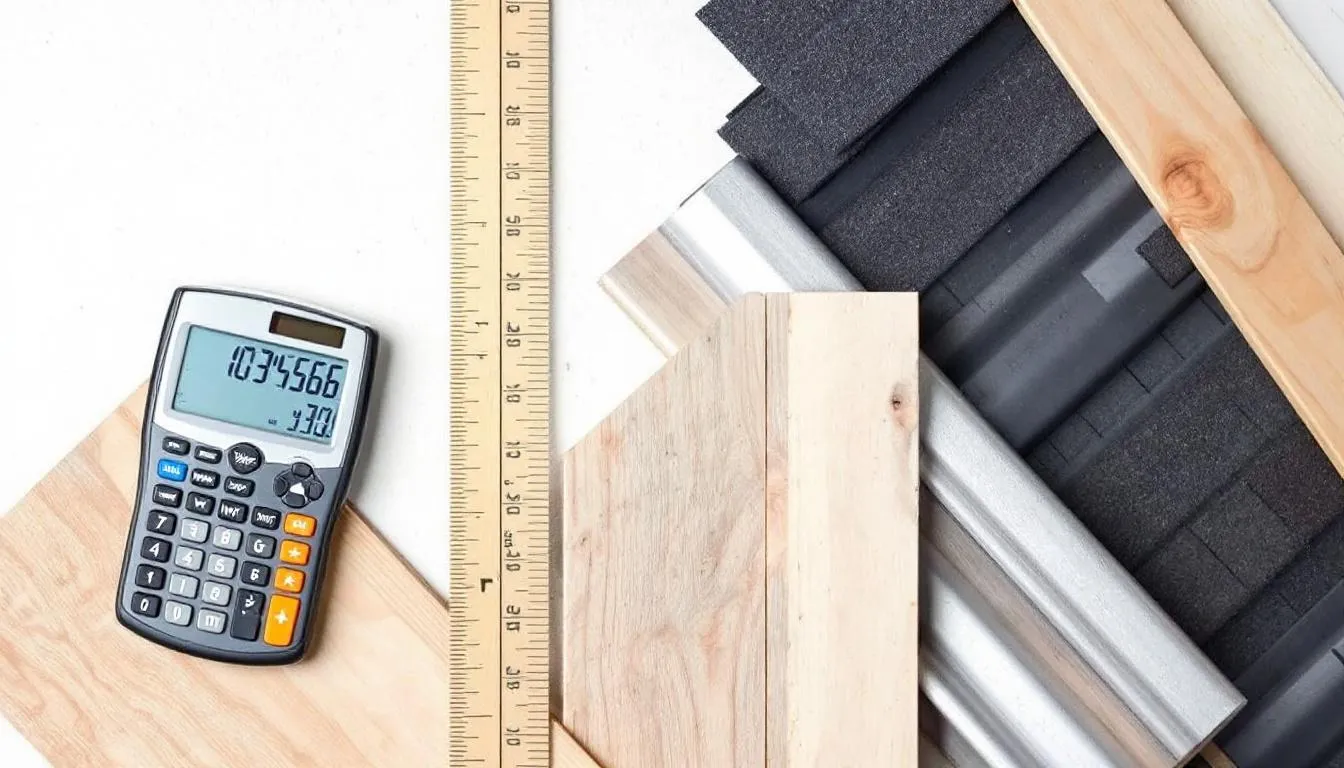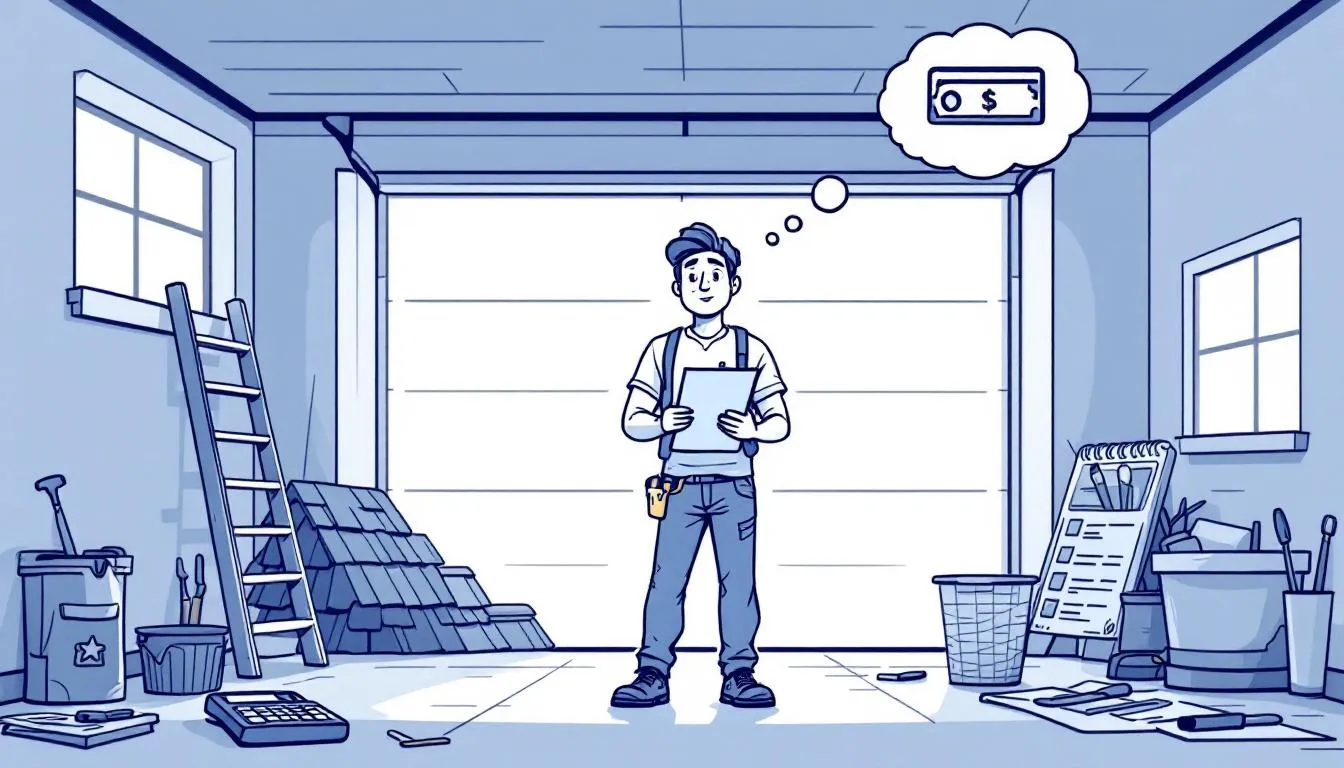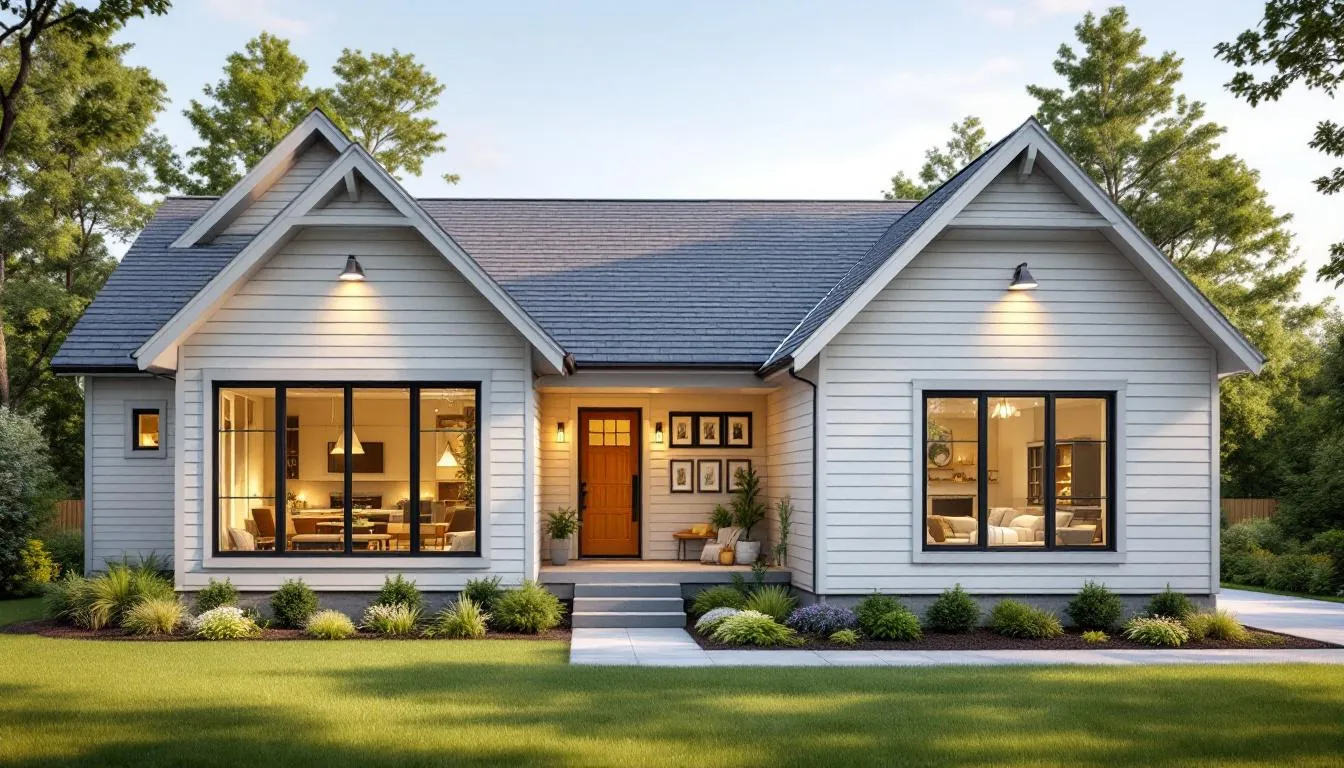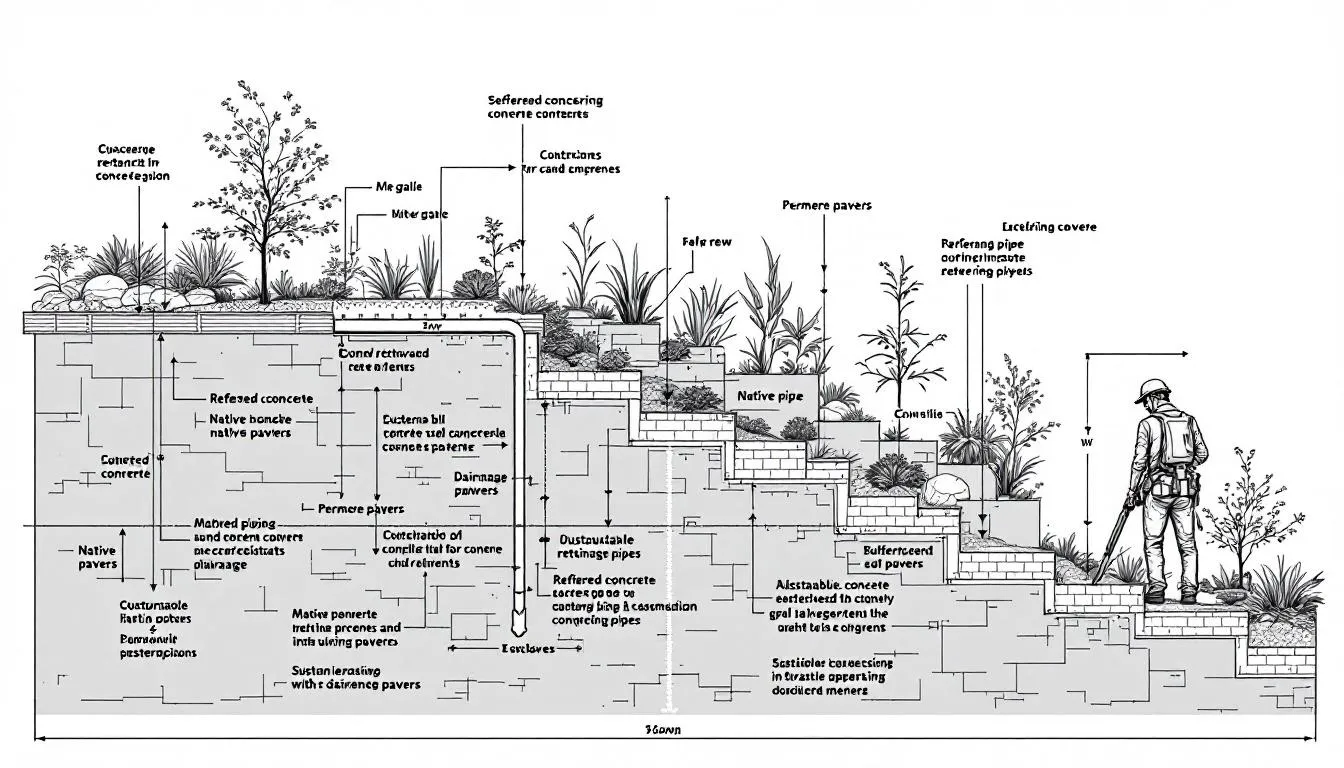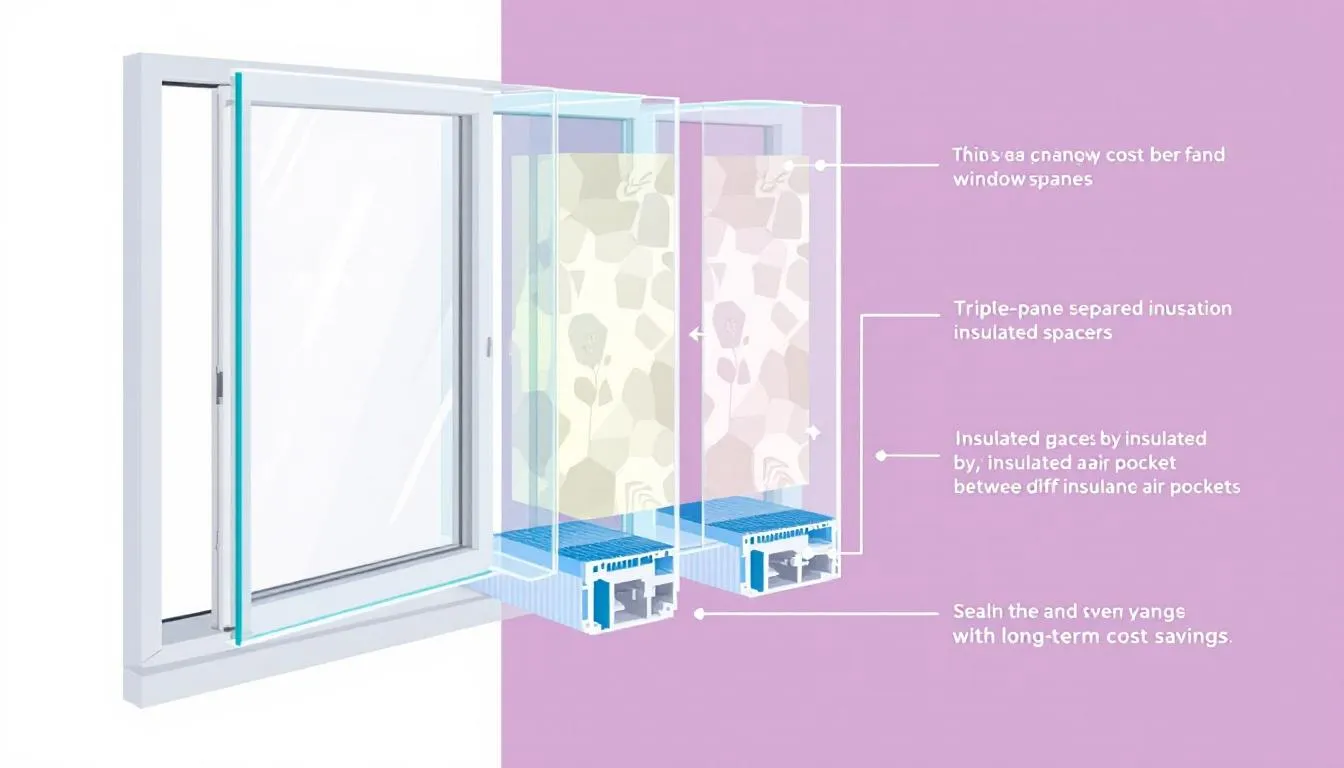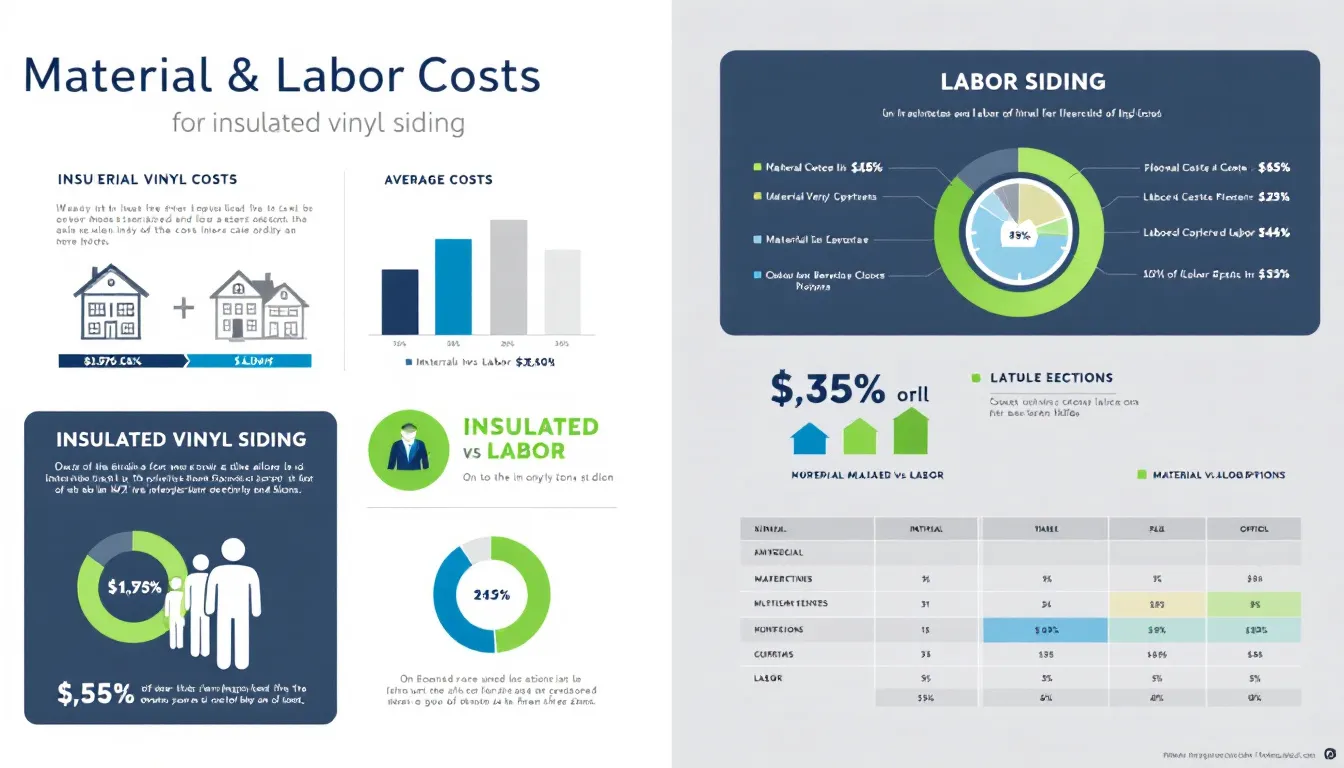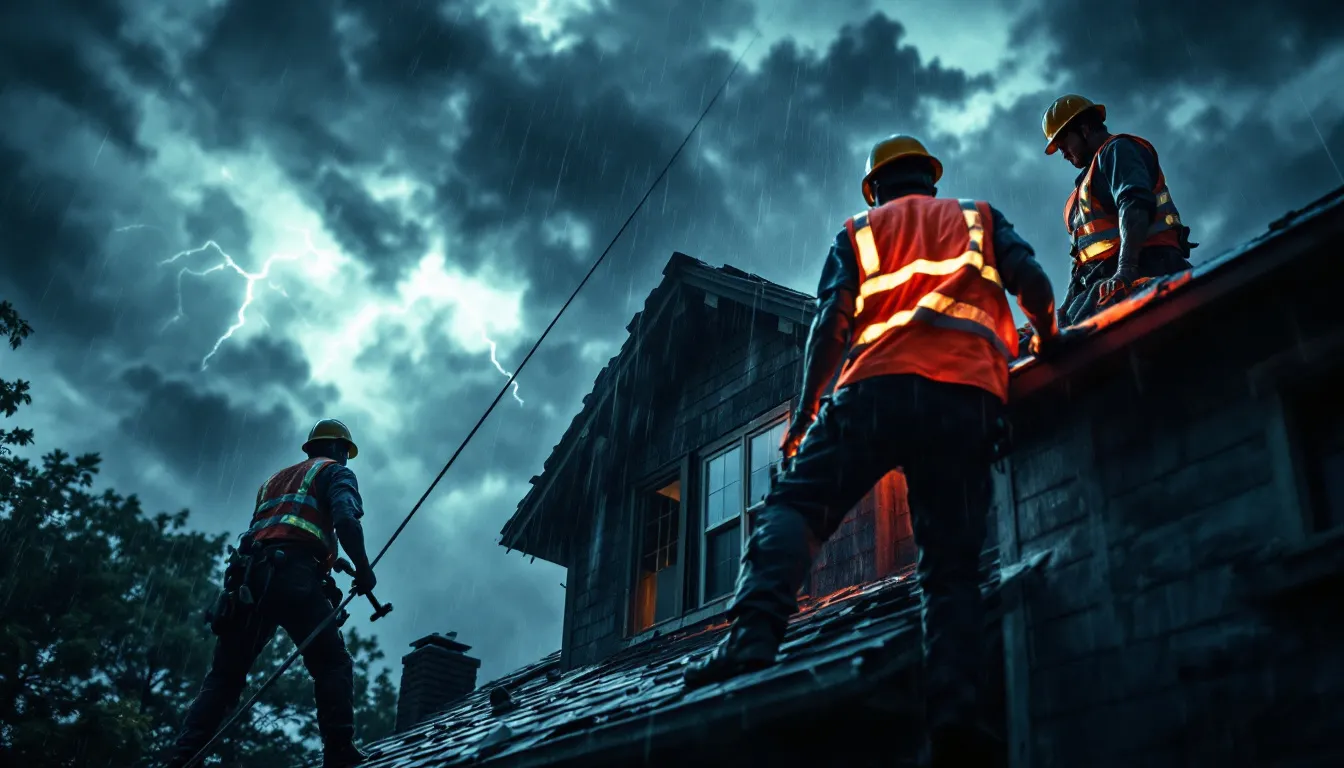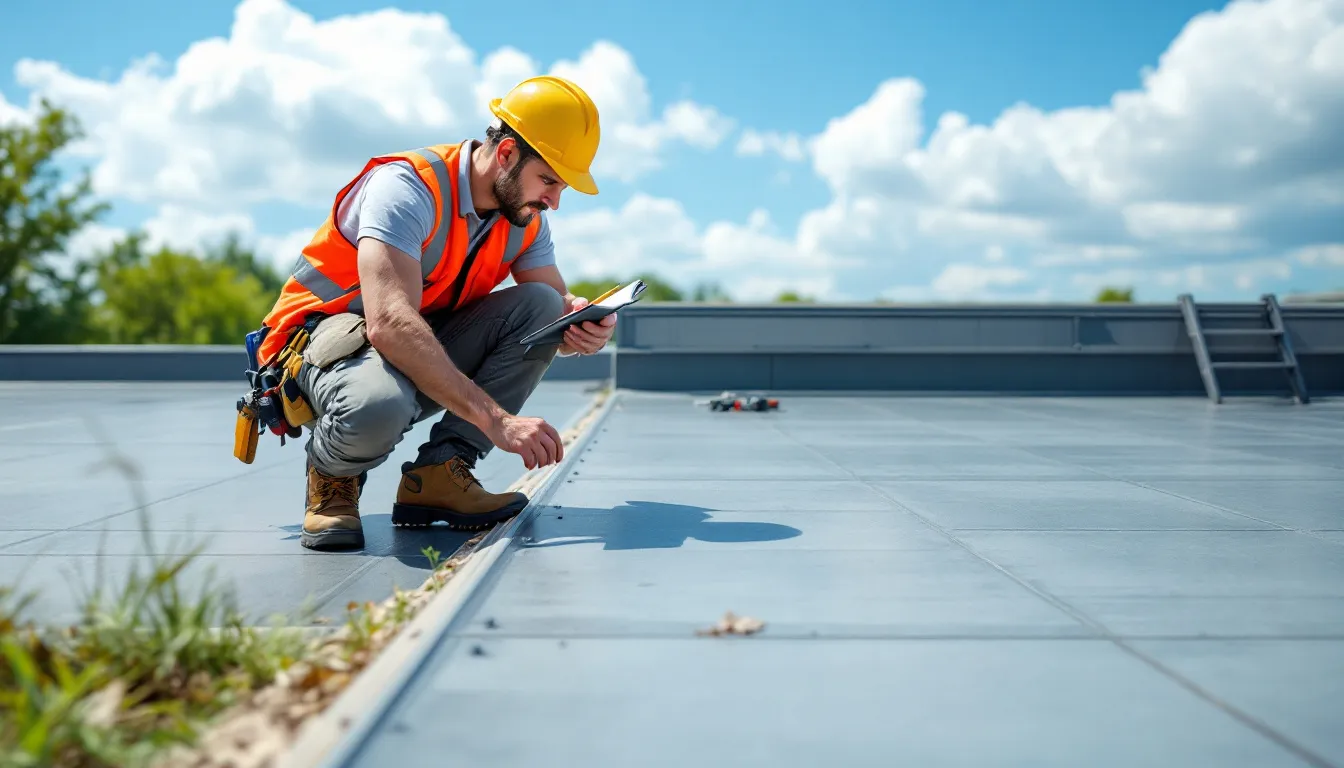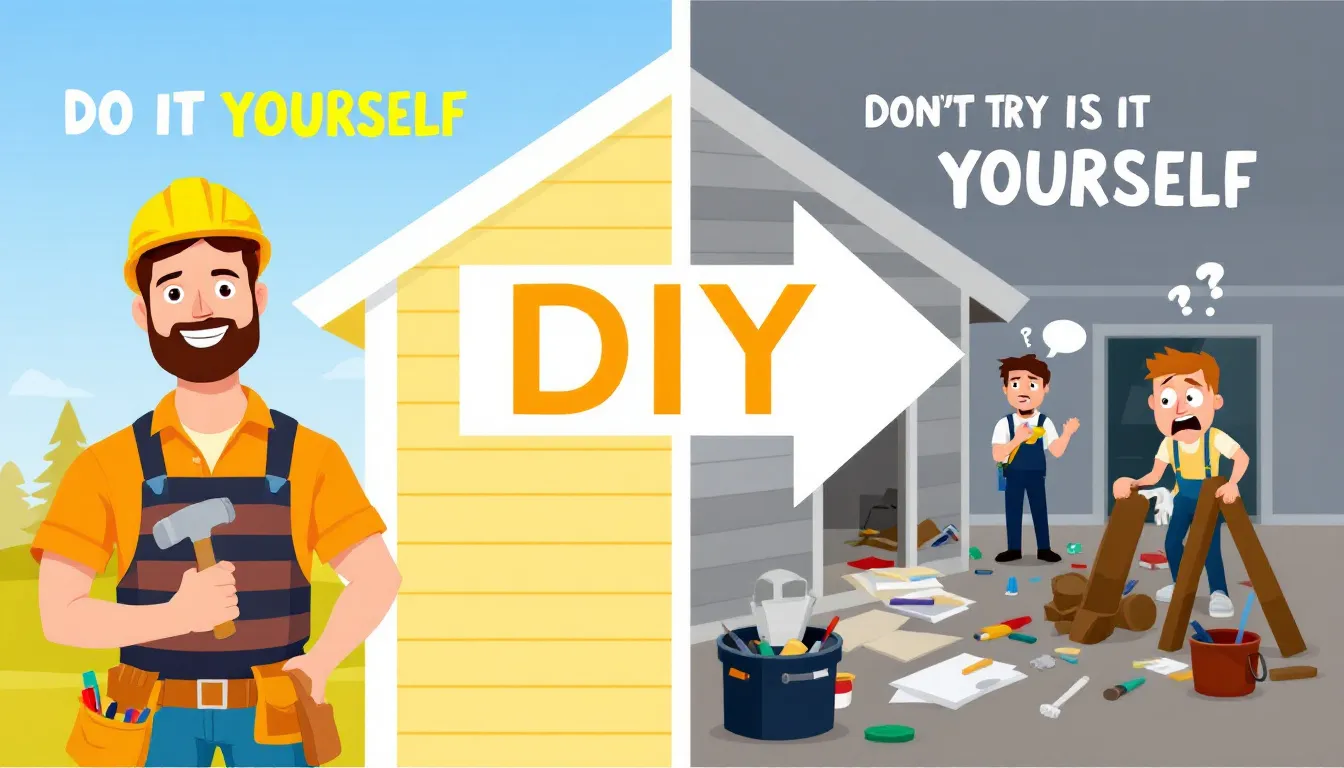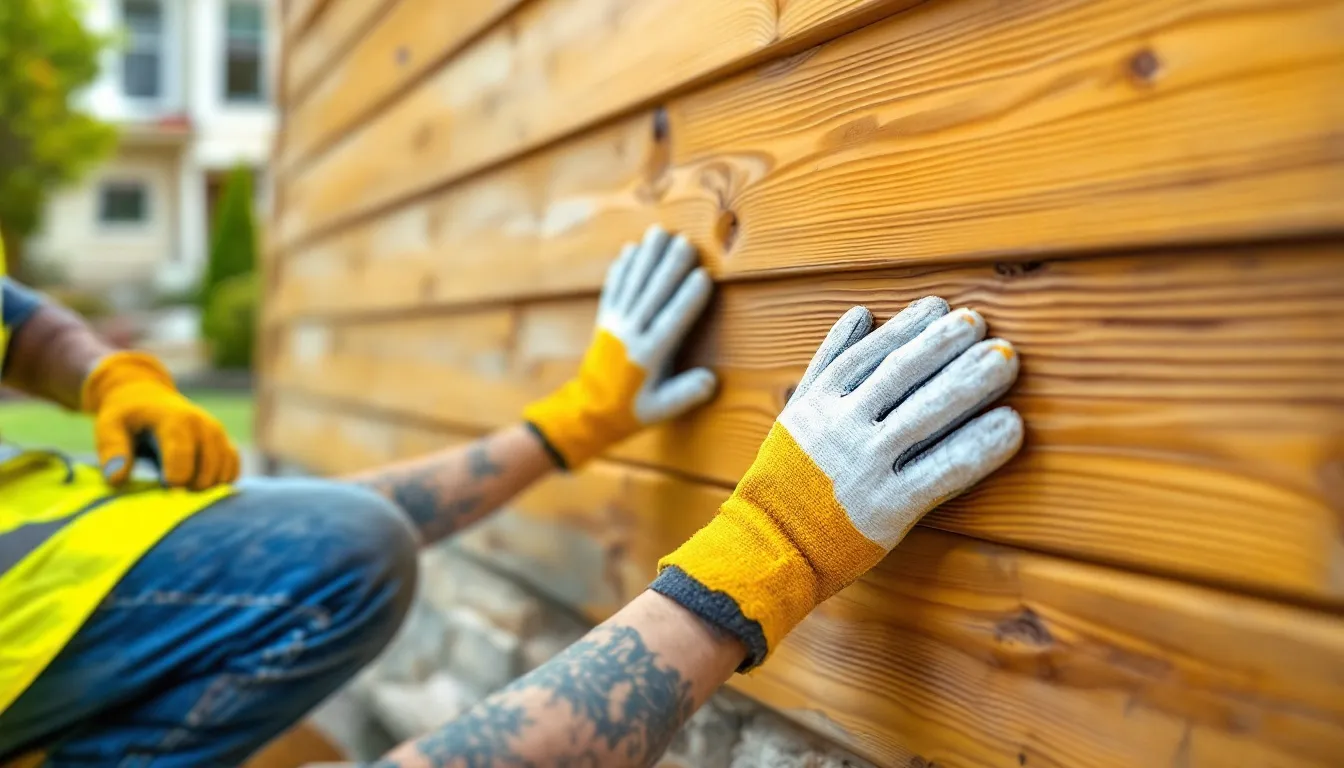Transform Your Home: How New Siding Can Increase Your Home's Curb Appeal and Value
Looking to learn how new siding can increase your home’s curb appeal and value? New siding can completely transform your home’s exterior, making it more appealing to buyers and increasing its market value. In this article, we will explore the visual improvements, siding options, color choices, and financial returns you can expect from siding replacement.
Key Takeaways
- New siding significantly enhances a home’s curb appeal and can improve its resale value by up to 7%, particularly with materials like fiber cement.
- Energy-efficient siding options, such as insulated vinyl siding, lower utility bills and enhance indoor comfort while increasing market value.
- Professional installation is crucial for maximizing the benefits of new siding, ensuring durability, energy efficiency, and minimizing maintenance costs.
Boosting Curb Appeal with New Siding
New siding dramatically changes the look of a home, making it more attractive to potential buyers and enhancing its curb appeal. The exterior appearance of a home influences visitors’ perceptions about its upkeep and value, contributing to their lasting impressions. Old or damaged siding detracts from the overall aesthetic and creates negative first impressions.
New siding offers the ability to customize the look of the home, enhancing its appeal with a variety of options. Specific siding choices can create a modern look, enhance architectural styles, and elevate your home’s visual impression.
Creating a Modern Look
Modern siding materials enhance the visual appeal of homes. Fiber cement siding, for instance, offers a durable and appealing option, lasting up to 50 years. New siding can completely transform a home’s appearance from dull to visually striking. New siding modernizes outdated appearances and creates a more inviting atmosphere.
With finishes available in wood and stone, panels, shingles, and planks, the aesthetic appeal of your home’s exterior can be significantly elevated. Choosing modern siding options like fiber cement or engineered wood siding can make your home visually appealing and stand out in the neighborhood.
These materials enhance curb appeal, provide long-lasting beauty, and require minimal maintenance. A modern look creates a lasting impression and ensures your home feels fresh and contemporary.
Enhancing Architectural Styles
The right siding enhances a home’s character and helps it stand out architecturally. For instance, shingle siding is recommended for achieving a classic coastal vibe. When matching siding for historic styles, matching the scale of the original siding is key. Choosing the right siding materials retains your home’s architectural integrity while enhancing its appeal.
Whether aiming for a modern, classic, or historical look, the right siding enhances curb appeal.
Choosing the Right Colors
Neutral tones like gray, beige, and soft whites complement modern siding. Earth tones can beautifully complement wood siding or stone accents. Bold colors like deep blue and green make a home stand out.
For contemporary farmhouse designs, choose dark vertical siding. This works well against a lighter horizontal backdrop. For soffits, choose shades 1-2 tones darker than the siding. This choice enhances your home’s overall appearance. A cohesive three-tone color scheme includes a primary color for the siding. It also features a contrasting trim and an accent color for the door.
Colors should complement your home’s architectural style, roof, trim, and front door for the best resale value. Real estate agents can offer valuable insights on appealing siding materials and colors. Color selection is crucial for enhancing a home’s curb appeal and aligning with neighborhood aesthetics.
Increasing Home Value with Siding Replacement

Replacing siding improves aesthetics and significantly boosts resale value. New siding can enhance a home’s value by approximately 7%, with fiber cement siding offering the highest ROI at around 88.5%.
Siding replacements elevate curb appeal and property value, often yielding higher returns than other renovations. Updating siding can boost market value, with some case studies showing sales price increases of up to 30%.
Siding upgrades enhance exterior appeal, often leading to quicker sales and higher offers. Let’s explore the financial benefits of siding replacement in more detail.
Return on Investment (ROI)
Siding replacement can recover up to 80% of costs. This makes siding replacement a worthwhile investment. The average ROI for new siding in 2023 is approximately 88.5%. Vinyl siding generally yields an ROI of about 68.9%, while the ROI for vinyl siding replacement is typically 80.2%.
Fiber cement siding offers an ROI of around 88.4%, making it a top value option. Natural stone siding recoups 60 to 70% in resale value, while stone veneer siding yields an impressive 90% ROI. Wood siding has an ROI of 77%, positively contributing to property value. The average ROI for brick siding stands at 77%, maintaining solid structural value.
ROI reflects the percentage of the siding investment recouped when selling a home. Investing in high-quality siding materials can significantly increase a home’s value and attract potential buyers.
Attracting Potential Buyers
Before-and-after visual comparisons reveal dramatic curb appeal changes that attract buyers. Transformations from outdated siding to modern materials dramatically improve aesthetic appeal and perceived value. Homeowners often report enhanced curb appeal and increased home value from siding replacement.
Homeowners note that siding replacements improve appearance and attract more buyers. Many homeowners express satisfaction with siding upgrades, citing improved looks and enhanced market value.
Energy-efficient siding upgrades can increase buyer interest by reducing energy expenses and appealing to eco-conscious consumers.
Long-Term Property Value
Improves energy efficiency and protects against weather damage. Quality siding materials reduce long-term maintenance costs and preserve property value.
Homeowners report increased satisfaction and value after siding replacement, noting aesthetic and property worth improvements. Replacing your siding is a wise investment that pays off in the long run by maintaining and even increasing your home’s value.
Energy Efficiency: Lower Utility Bills and Increase Value

Upgrading to energy-efficient siding can significantly lower energy consumption and improve overall comfort in homes. Energy-efficient siding reduces energy loss through thermal bridging. Quality siding shields homes from moisture, pests, and extreme temperatures.
Energy-efficient siding minimizes energy bills and increases resale value. Here are the specific benefits of insulated vinyl siding and its impact on heating and cooling costs.
Insulated Vinyl Siding Benefits
Before:
Insulated siding offers energy savings and lowers heating and cooling costs. Rigid foam insulation in insulated vinyl siding increases energy efficiency and adds protection against dents and cracks. Insulated vinyl siding prevents heat loss in winter and keeps excess heat out in summer, contributing to year-round comfort. Insulated vinyl siding enhances comfort by regulating indoor temperatures more effectively. Choosing insulated vinyl siding reduces energy costs and creates a more comfortable living environment.
After:
Insulated siding offers several benefits:
- Energy savings and lower heating and cooling costs
- Increased energy efficiency due to rigid foam insulation
- Protection against dents and cracks
- Prevention of heat loss in winter and excess heat in summer, contributing to year-round comfort
- Enhanced comfort by regulating indoor temperatures more effectively
- Reduction in energy costs, creating a more comfortable living environment
Insulated vinyl siding enhances overall energy efficiency. The insulation underneath the siding helps maintain indoor temperatures, reducing the need for excessive heating and cooling. This not only lowers utility bills but also contributes to a more sustainable and eco-friendly home.
Impact on Heating and Cooling Costs
Insulated siding can cut heating and cooling costs by about 14.2% for a typical two-story home. New siding can substantially reduce air leakage, which improves energy efficiency and stabilizes indoor temperatures.
Energy-efficient siding materials lower utility bills by improving insulation and reducing air leaks. Overall, energy-efficient siding enhances home comfort while providing cost savings on utility bills.
Protecting Your Home from Harsh Weather

Durable siding materials like fiber cement provide long-term protection against severe weather, maintaining property value. Vinyl siding is particularly valued for its ability to endure harsh weather without compromising its integrity. High-quality siding materials last longer, withstand harsh weather, and reduce maintenance.
New siding protects against moisture, wind, and temperature fluctuations. James Hardie’s HardieSingle siding is known for its durability in coastal environments. Fiber cement siding is non-combustible and resists hail damage, making it ideal for extreme weather.
Properly installed siding protects against weather elements, enhancing durability and energy efficiency. Professional installation prevents future expenses from water damage and pest infestations. Everlast composite siding is engineered to minimize upkeep, protecting against moisture and pests.
Durable siding materials and siding material withstand strong winds, hail, and flying debris. Here’s how these materials protect against harsh weather conditions and prevent moisture and mold growth.
Durability Against Weather Conditions
Fiber cement siding is highly durable and resistant to fire and harsh weather. Consider siding’s durability in relation to local weather conditions when choosing. Durable materials like vinyl, aluminum, and engineered wood withstand harsh weather and provide superior protection.
This durability keeps your home’s exterior intact and visually appealing despite severe weather.
Preventing Moisture and Mold Growth
Durable siding materials prevent water infiltration, mold, and structural damage. High-quality, properly installed siding acts as a moisture barrier, preventing mold growth and maintaining structural integrity.
This protects your investment and ensures a healthier living environment by reducing mold and moisture risks.
Low Maintenance and High Durability

Vinyl siding is known for low maintenance, versatility, affordability, and a variety of styles and colors. New siding lowers long-term costs, including substantial utility bill savings. New siding reduces upkeep and repair needs, offering a worry-free exterior.
Here are the minimal maintenance requirements and longevity of modern siding materials.
Minimal Maintenance Requirements
Vinyl, aluminum, and fiber cement siding require low maintenance. Wood siding requires more frequent upkeep, including repainting and maintenance. Modern materials like fiber cement siding need repainting every 7-10 years. Matching soffits during installation can reduce overall maintenance and enhance the appearance of the siding.
Low maintenance requirements make these materials practical for reducing upkeep and enjoying a beautiful, durable exterior.
Longevity of Modern Siding Materials
Modern siding materials can last 30 to 50 years. Engineered wood and aluminum siding are known for their longevity. Durable siding materials require minimal maintenance, offering timeless appeal and unique texture. Modern siding reduces repair costs and enhances long-term value.
The longevity of these materials keeps your home protected and beautiful for decades, making it a wise investment.
The Importance of Professional Installation
Professional siding installation ensures optimal performance and longevity. Quality installation minimizes warping or water damage, providing a durable solution that adds value and protection. Choosing the right contractor maximizes the value of your siding renovation.
J&S Siding provides expert services for high-quality installation. Here’s why proper installation is crucial and how it helps avoid costly repairs.
Ensuring Proper Installation
Professional installation maximizes the benefits of new siding. Improper installation can lead to moisture infiltration and energy loss, diminishing the siding’s effectiveness.
Ask for recommendations and obtain estimates when selecting a siding contractor. Evaluate contractors by checking references, reading reviews, and confirming licenses and insurance. Proper installation ensures optimal performance and longevity of your siding.
Avoiding Costly Repairs
Professional installation can reduce maintenance costs by 40% compared to DIY. Professional installation prevents future siding problems. Correct installation avoids costly repairs and ensures a durable, energy-efficient exterior.
This enhances curb appeal, lowers utility bills, and increases property value.
Real-Life Transformations: Case Studies
Home exterior renovations enhance curb appeal, making outdated homes stand out. Homeowners report significant curb appeal increases after siding replacement, making a home’s curb more attractive to buyers and improve your home’s curb appeal.
Here are before-and-after comparisons and testimonials from homeowners who have experienced these transformations.
Before and After Comparisons
Visual comparisons of homes before and after siding upgrades highlight the dramatic transformation and enhanced curb appeal. Real-life examples showcase how siding replacement not only improves aesthetics but also increases property value. Homeowners report increased satisfaction and value in their properties following siding upgrades, reflecting the power of effective visual changes.
These transformations demonstrate the profound impact that new siding can have on a home’s appearance and value.
Homeowner Testimonials
Homeowners frequently report increased satisfaction and home value after siding upgrades, often describing the positive impact on their daily living environment. Testimonials from homeowners who have replaced their siding highlight the enhanced curb appeal, improved energy efficiency, and increased property value.
These personal stories provide valuable insights and inspiration for anyone considering a siding replacement project.
Summary
In conclusion, new siding offers a multitude of benefits that can transform your home. From boosting curb appeal and increasing home value to improving energy efficiency and protecting against harsh weather, siding replacement is a wise investment. By choosing the right materials, colors, and ensuring professional installation, you can enjoy a visually appealing, durable, and energy-efficient home. Consider the long-term benefits and take the first step towards enhancing your home’s exterior today.
